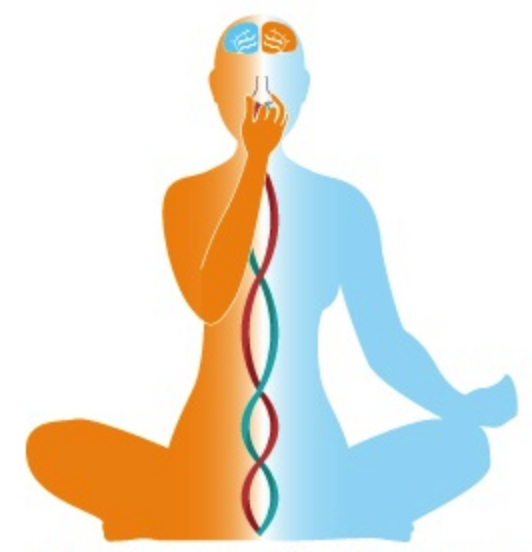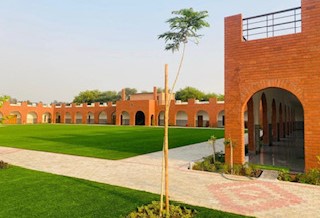There is an invariable connection between the mind and breathing. Every state of mind is reflected by a corresponding change in the breathing pattern. Researches have shown when mind is disturbed, breath also gets disturbed. This imbalance in breathing disturbs the physiological functions and overtime become pathological. Disease such as asthma, hypertension, irritable bowel syndrome, migraine, hyperacidity etc is the results of such imbalances. Such diseases further disturb the mind and so the breath in turn; and the feedbacks continue aggravating the disease status. This vicious cycle can be cut by either pharmacological interventions or simple Yoga Techniques.
Sanskrit words ‘Prana’ means breath, life, vitality, energy or strength and ‘Ayama’ means length, expansion, stretching or restraint. Pranayama thus refers to control of prana by stretching it. In Yoga, breathing is one of the primary means through which control of prana is brought about. This control is over all the functions of breathing – inhalation, exhalation, retention and suspension of breath. Pranayama are of primary importance in Yoga. Some Yoga masters feel that no other practice is necessary for attaining the perfection of body and mind, as pranayama by itself is sufficiently capable of eradicating all toxins from the human system.

Pranic Channels – Pic courtesy Google
Pranayama practices systematically harness the breath and thus the mind-body complex. This science not only offers an answer to the intriguing body mind problems, but also helps to understand and gain mastery over them. Therefore, a Yoga practitioner masters this science of breath to control the mind and still its constant ‘INVOLUNTARY’ movement.
The effects of Pranayama are on multiple dimensions of human personality. Since breathing pattern is crucial for a healthy body, with improvement in breathing the physical, physiological and mental systems work in optimal manner and thereby bring about a mental state of calmness and peace. Consistent practice keeps one physically fit, cheerful, energetic, mentally calm, balanced and focused.
There are multiple Yogic breathing techniques. An average person can get most health benefits by following phases of inhalation and exhalation techniques. Higher practices of Yogic breathing involve breath retention-suspension along with certain neuro-muscular locks that involve changes in the internal pressure of the body to a high degree. They directly influence the tone of the visceral organs, glandular secretions, and also the vital nerve plexuses. These higher practices should be learnt ONLY under the guidance of an expert as incorrect practices may lead to complications.
‘Life is not measured by the number of days but by the number of breaths’ – one needs to master the proper rhythmic patterns for slow deep breathing to not just lengthen life but to strengthen it from its core!





Add Comment